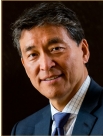Double Dome Laminoplasty: Works Well but There Are Exceptions
Article information

The authors describe a novel technique for decompressing the C2 region without performing a C2 laminectomy or laminoplasty [1]. In 11 consecutive ossification of the posterior longitudinal ligament (OPLL) cases causing cord compression and myelopathy at C2, the authors performed a double dome laminoplasty. The rationale behind the procedure is to leave the dorsal cortex of the C2 spinous process and lamina intact, since the major extensor muscle of the neck, the semispinalis cervicis, inserts there. The authors noted improved Japanese Orthopaedic Association scores in all 11 patients, suggesting that myelopathy improved in all 11 patients.
This is yet another innovative technique to treat OPLL from the inventive mind of Professor Dong Ho Lee, who also invented the vertebral body sliding osteotomy technique for OPLL [2]. For the patient who has OPLL extending cranially behind the C2 body, I agree that there are substantial advantages to this technique over the alternatives. I too have independently thought of and utilized this technique several times over the past 20 years but not to the extent that Professor Lee has. There are 2 reasons that I have not used this as frequently as he has. First, the prevalence of OPLL is less common in the United States than in Korea. Second, I have switched to fusing most patients who have extensive OPLL that extend behind C2. The rationale for this is that fusion is known to slow the growth of OPLL. If a patient has extensive OPLL such that a double dome laminoplasty can only give a few millimeters of extra room, and the patient’s life expectancy is more than 1–2 decades, I am concerned that further growth of the OPLL is likely to occur. The problem then is that the patient could be elderly and there are few treatment options other than a C2 total laminectomy (with resultant loss of the semispinalis insertion point). That could potentially result in cervical kyphosis. The elderly often have thoracic hyperkyphosis and compensate with increased cervical lordosis. So, losing that compensatory mechanism can result in a dropped head syndrome. In the case that is illustrated in this paper, the postoperative magnetic resonance imaging shows an adequate decompression. However, let’s assume that this patient is 40 years old. If one assumes that the OPLL started growing when the patient reached age 20, then it is not unreasonable to assume that the OPLL could double in size by the time the patient reaches age 60 and triple by age 80. If that occurs and there is recurrent cord compression with myelopathy, the treatment might necessitate a total C2 corpectomy with a combined transoral and upper cervical approach, followed by posterior occipitocervical fusion. Doing that on an elderly patient, with possibly an ossified dura, is not likely to be easy. For this reason, I prefer to use this technique for patients who are already elderly or have demonstrated slow growing OPLL that is not likely to progress to cause recurrent cord compression and myelopathy in the patient’s remaining lifetime.
Notes
The author has nothing to disclose.
